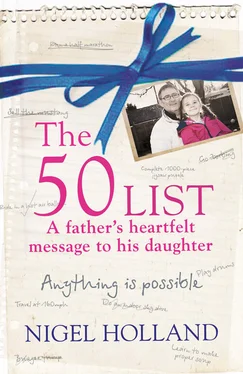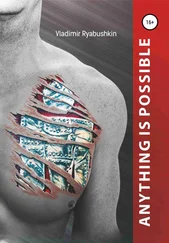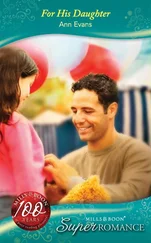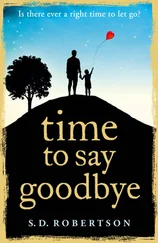I was also treated differently by the teachers once I hit junior school: while they still stopped me from doing things I felt perfectly able to do, they didn’t seem to patronize me as much. Quite the contrary, in some cases, which was probably vital to my development; it wouldn’t have done me any favours to become someone who thought he could get away with not doing things he didn’t want to do, after all.
And I did my fair share of transgressing, like any other kid. A favourite transgression was not going straight inside after the bell had rung for the end of playtime, the punishment for which was having to stand on a black spot. I don’t know who thought up this particular punishment, but it was a sound one, in that it was so public. There were six black floor tiles, altogether measuring about 20 inches square, which formed a pattern underneath the main school staircase. If you were naughty, you would be made to go and stand on one of these – a kind of 20th-century equivalent, I guess, of committing an act of treason and having your head stuck on a pole, for all to see, on London Bridge.
But standing anywhere for long was an issue for me. Though the calipers corrected my foot drop, they did nothing to aid my balance, so remaining stationary was a challenge. So it was odds on, I reckoned, that when a passing teacher noticed my plight, I’d be excused an extended spell in position. But it wasn’t to be.
‘Here we are,’ she said, grabbing a chair from down the corridor. ‘Sit on that.’
It was probably a useful life lesson, that one.
Another was more gradual but equally enlightening: how the world views you when you’re long out of nappies but are still wheeled to school by your mother. Being in my adult buggy was an eye-opener from day one: a window on the world I would take my place in as an adult – a world that would see the wheels and treat me differently. I remember being pushed home by my mother one afternoon, and how the mother of a friend of mine stopped to speak to her. My father was unwell at that time, and had been home from work, so when the lady, looking concerned, asked Mum, ‘How is he today?’ we both naturally assumed she was talking about Dad.
‘Oh, he’s much better, thank you,’ Mum replied.
It was only then, as the woman looked solicitously at me, that we realized she actually meant me. I was old enough to speak, intelligent enough to speak and, to cap it all, her son’s school friend, yet because I was being wheeled home in a giant buggy, she assumed the correct approach was to talk about me rather than to me.
Looking back, I wish I’d mumbled and drooled all over her shoes.
But my time in mainstream school was fast coming to an end anyway. In 1974, when I was 12, it was decided I should be moved. Not to the local high school my brothers now attended, but to a state school called Martindale, in Hounslow, west London, which would be more suited to my needs.
Though a part of me really wanted to join my brothers at Harlington Secondary, in retrospect it would probably have been a nightmare. It had a lot of stairs, for one thing, and was quite a bus ride away, and having got there I don’t doubt I would have encountered as many bullies as I’d left behind in primary school.
I was also, at that time, beginning to experience a marked deterioration in my hands, which was starting to make it difficult to write. Mum and Dad had recently procured a manual typewriter for me, and I was beginning to learn how to complete my written work on that. Going to Harlington, therefore, would have meant not only bus rides and stairs and bullies but also the prospect of having to haul a heavy old-fashioned typewriter around to every classroom in the school – like some sort of roving correspondent. No, on balance, Martindale School it had to be. And, despite it being daunting to go somewhere so outside my experience, I remember actually being quite excited.
My last day in primary school was mid-term for some reason, and for all the challenges I’d faced in coming to terms with my disability, my overwhelming sense – then and to this day – was that the vast majority of people were – and are – friendly and supportive. The friendships I’d formed there would give me the confidence to face whatever was next. My friends also gave me a leaving present to remember them by: a Timex watch, which the whole class had clubbed together to buy for me. I was so overwhelmed that it was one of only a few times in my life when I couldn’t physically get any words out.
How I hope Ellie is similarly blessed.
Mantra for the day: Lights! Camera! 50 List action!
Prayer for the day: Don’t prang the Porsche.
Everything to do with filming begins early. Everyone knows that. And I’m glad we all got an early night last night, because The One Show is no exception. Happily, it’s half-term, so the whole family can get involved. And as half-term days out go, I am definitely the current hero; days out don’t come better than this.
We kick off at 7.15 a.m. at a place called Airkix in Milton Keynes, where we’ve driven, as instructed, to meet the film crew.
‘Will they actually say “action!” do you think?’ Amy wants to know, as we pull up and get out to greet them.
None of us knows, but we’re hopeful. It’s certainly an impressive start. We’re met by the producer, Matt Ralph, the presenter, Lucy Seigle, as well as a research assistant (the one with all the notes and itineraries, presumably) and a runner, who I assume does any required running. (It’s all a bit manic, and to my shame – perhaps because the nerves have kicked in now – I don’t get either of their names. So, belatedly, apologies and thank you!)
Greetings over, it’s time to get the day properly underway and film the first of today’s challenges: indoor skydiving. I have to keep pinching myself – I’m actually doing all these amazing things today! As I have been a thrill-seeker all my life, this is just about the best day out I can imagine, and I’m so grateful that The One Show has picked up on why I’m doing The 50 List: to show Ellie that if you really want to do something, then you shouldn’t let anything stand in your way – little inconveniences like CMT included.
They’ve opened Airkix specially early (the power of Auntie Beeb, I guess) so that we can film before the day gets going properly and they can get their shots in the can – I’m already conversant with the correct lingo – without too many people wandering around.
Numbers have swelled now; we’re also met by a cameraman and soundman. And once we’re all assembled, the runner immediately runs off to find some breakfast. She soon returns with an array of egg, bacon and sausage rolls. They smell delectable, but given what I’m going to be doing before long, I barely touch mine. Don’t want to bring it all back up again!
Since Ellie’s been invited to try the skydiving too, she gets to sit in on our short pre-flight briefing. This seems to clinch it: despite her initial enthusiasm, the combination of cameras and sound booms and safety rules and jumpsuits conspires to make her change her mind – she’ll just watch. Which is fine. This is not about cajoling her to do things she doesn’t want to but just to let her know that, if she does want to do, she can. Which she might well do some day, if not this day, after watching me having a go at it.
With me all kitted out in my flight suit, it’s time for my first interview with Lucy.
‘So, Nigel,’ she says, ‘why has this made your list?’
Not for the chance to dress up like a superannuated Superman, obviously. ‘It’s a bit of a cliché,’ I tell her, ‘but you’re free as a bird up there. I’m out of my wheelchair. I’m not on my legs …’
Читать дальше












